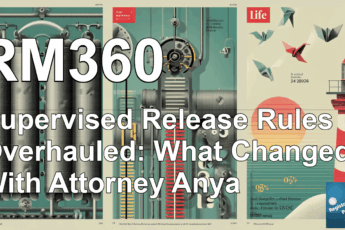The U.S. Bill of Rights, heralded as the cornerstone of American liberty, was designed to safeguard individual freedoms. With its carefully crafted language, it seeks to affirm that personal rights take precedence over government overreach. However, one amendment often remains in the shadows of legal discourse—the Ninth Amendment. Known for its ambiguity, the Ninth Amendment has nevertheless been invoked in various arguments about unenumerated rights, such as privacy, travel, or even parenting. But does this forgotten amendment have any relevance in modern debates surrounding public safety measures, such as offender registries?
This blog post delves into the origins, intent, and modern applications of the Ninth Amendment while exploring whether it could lay the groundwork for legal arguments against controversial practices, like public registries. Could unenumerated rights become a powerful shield for individuals in the future?
What Was the Original Intent of the Bill of Rights?
The Bill of Rights was ratified in 1791 to protect Americans from potential abuses by their own government. But were these protections intended solely for individuals or groups? In the context of the late 18th century, when these laws were written, individuality was paramount. The framers of the Constitution, influenced by Enlightenment thought, envisioned rights as inherent to every person—a safeguard against tyranny.
As discussed, a textualist interpretation of the Bill of Rights makes it clear that these freedoms were written to protect individuals, not collectives. The framers didn’t draft amendments for specific group protections because that was not the intention. Instead, the language emphasizes “the people,” implicitly advocating for personal liberty.
But where the clearly defined rights of the First, Second, and Fourth Amendments have taken center stage in countless legal challenges, the Ninth Amendment remains the cryptic outlier. What does it truly protect, and why does it remain so underused?
Understanding the Ninth Amendment: Protecting Rights Beyond the Text
The Ninth Amendment states:
“The enumeration in the Constitution of certain rights, shall not be construed to deny or disparage others retained by the people.”
This seemingly straightforward statement has led to decades of interpretative challenges. At its core, the Ninth Amendment acknowledges that not all rights can be explicitly listed in the Constitution, leaving room for implied protections. However, its practical application has often been sidelined in favor of more defined provisions.
Historically, the Ninth Amendment has been cited to defend rights such as privacy, movement, and parenting—freedoms that the Constitution does not explicitly enumerate. Notable legal cases, including those on reproductive choice and same-sex marriage, have drawn indirectly from concepts rooted in this amendment.
Still, the Ninth Amendment’s legal power often falls into a murky area. Its vague nature gives courts wide latitude to either accept or dismiss challenges based on this provision, especially if no strong precedents or evidence are presented.
Registries, Public Safety, and the Clash with Individual Freedoms
One modern legal question that evokes the Ninth Amendment relates to the constitutionality of offender registries. Registries often impose significant restrictions on a person’s movement, privacy, and life—especially after the completion of their custodial obligations. But can these limitations stand up to scrutiny under Ninth Amendment arguments?
In recent discussions, individuals have raised concerns about whether mandated registration intrudes on unenumerated rights to privacy and free movement—a legal gray area firmly within the purview of the Ninth Amendment. For instance, while the Constitution doesn’t explicitly list a “right to travel freely,” this right has been upheld through precedents and tied to personal liberty. Similarly, laws surrounding privacy, though not explicitly stated in the Constitution, are commonly recognized as fundamental.
Still, the courts have been cautious, often prioritizing public safety over individual freedoms. Registries are legally upheld as “civil regulatory schemes” rather than punitive measures. Courts typically cite the state’s compelling interest in protecting public safety, even when registries infringe upon privacy and movement. But is this balance truly justifiable?
The Untested Frontier: The Ninth Amendment as a Legal Argument
Despite its potential, the Ninth Amendment has yet to see a landmark case successfully challenge the constitutionality of registries, particularly for individuals who have completed their sentences. Why is this argument largely untested?
-
Lack of Precedent: Courts are often reluctant to venture into uncharted territory without solid backing from previous legal rulings. In the absence of successful Ninth Amendment challenges, future claims face an uphill battle.
-
Insufficient Evidence: Many legal challenges have failed to present concrete evidence demonstrating how registries directly violate unenumerated rights. For example, proving the “disability restraints” of registries in a tangible, measurable way is critical for moving beyond hypothetical arguments.
-
Public Perception: Public safety concerns heavily influence judicial decisions. Registries are often perceived as necessary tools for community protection, even though research is divided on their actual effectiveness. This perception creates an uphill battle for those advocating for Ninth Amendment protections.
The Debate: Are Registries Really Supervision in Disguise?
Some legal scholars and advocates argue that offender registries function as an extension of supervision even after an individual’s sentence is completed. The ongoing requirements—to update personal information, adhere to strict reporting timelines, and face potential restrictions on travel—can feel like a form of probation.
Yet others disagree, pointing to the nature of registries as “civil regulatory schemes.” For instance, selective service registration for young men aged 18-26 is not treated as a punitive measure; failure to comply might result in penalties, but it doesn’t impose day-to-day restrictions on movement or privacy. Could this distinction offer a pathway to reframing how registries are perceived and regulated?
To challenge the notion of registries as supervision effectively, opponents would need to present compelling evidence. They could demonstrate how these systems restrict individuals beyond reasonable measures, weighing heavily on unenumerated rights like privacy and free movement.
Balancing Individual Liberties and Public Safety
At the core of this debate lies the ever-present tug-of-war between protecting individual rights and ensuring public safety. Does the existence of a registry truly accomplish its intended purpose of reducing threats to the community? Or has it become a system of perpetual punishment for individuals who have already served their time?
Research on the efficacy of registries often suggests diminishing returns. Critics argue that they may do little to enhance actual public safety, as they primarily create societal barriers for individuals attempting to reintegrate. If these systems are shown to lack measurable public safety benefits, Ninth Amendment challenges might carry more weight in dismantling or reforming registry practices.
Actionable Takeaways
While the Ninth Amendment challenge to registries remains unexplored, concerned individuals can advocate and prepare a foundation for future legal battles.
-
Build Evidence: Demonstrate the tangible impacts of registries on individuals’ unenumerated rights, such as privacy and freedom of movement, especially after the completion of a sentence.
-
Educate the Public: Raise awareness about the Ninth Amendment’s potential and dispel misconceptions about registries’ effectiveness in protecting public safety.
-
Collaborate with Legal Experts: Work with constitutional scholars, lawyers, and activists to develop strong arguments and test cases that bring clarity to how the Ninth Amendment applies in modern contexts.
Conclusion
The Ninth Amendment, a sleeping giant within the Constitution, holds immense potential for protecting individual rights that are not explicitly listed. But realizing its full power requires innovative legal approaches, robust evidence, and an honest evaluation of whether practices like registries strike the right balance between personal liberty and community safety.
While registries remain a contentious issue, the Ninth Amendment offers a lens through which these systems could be challenged. Whether this pathway will gain traction in the courts remains uncertain—but for those advocating for individual freedoms, it holds promise as an avenue to question practices that burden liberty long after justice has been served.




Leave a Comment